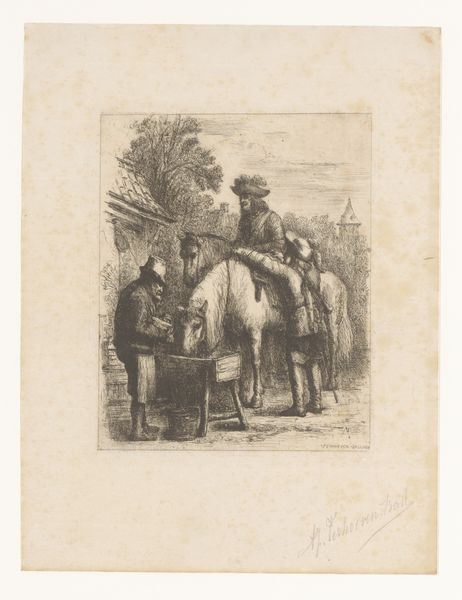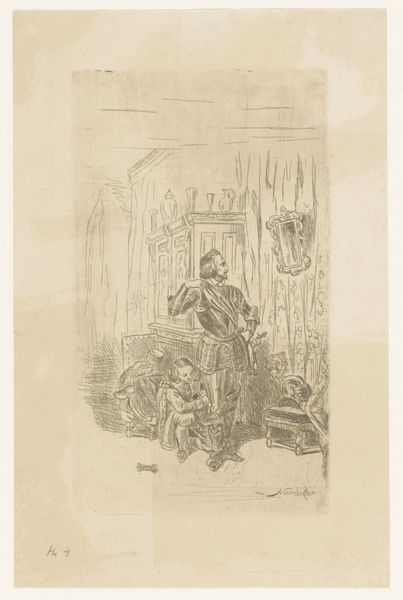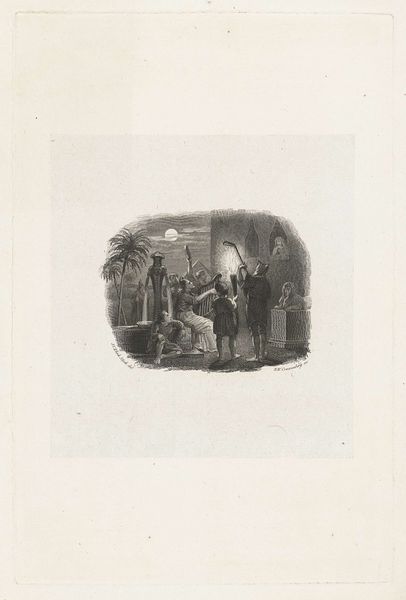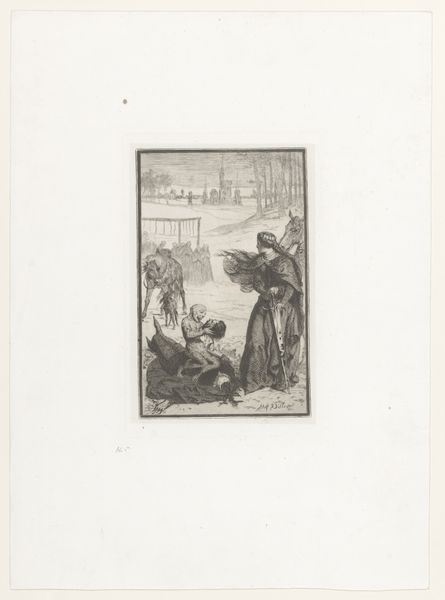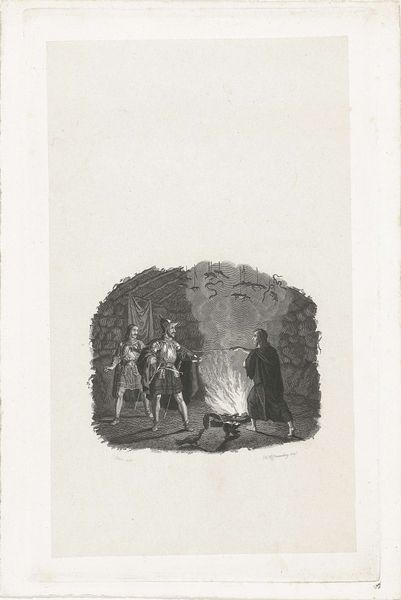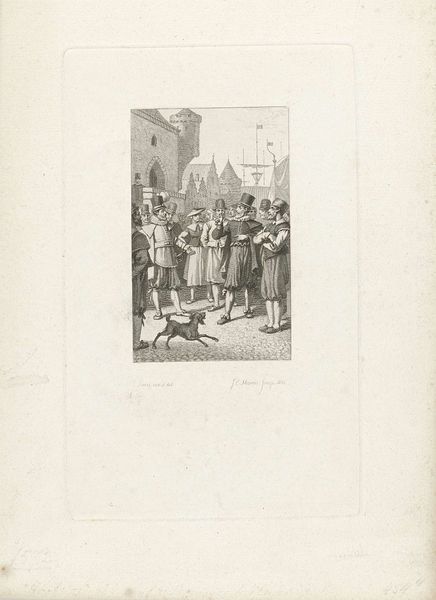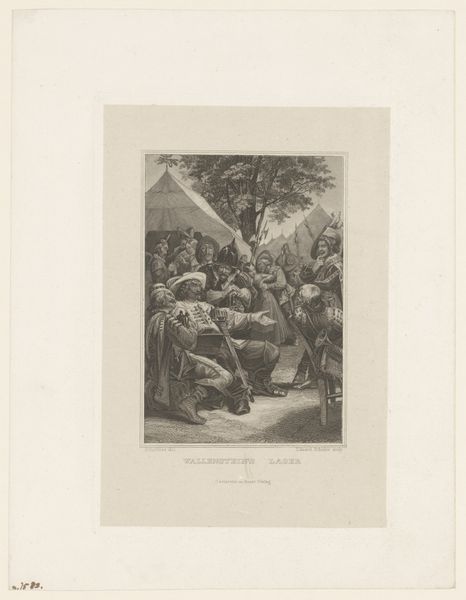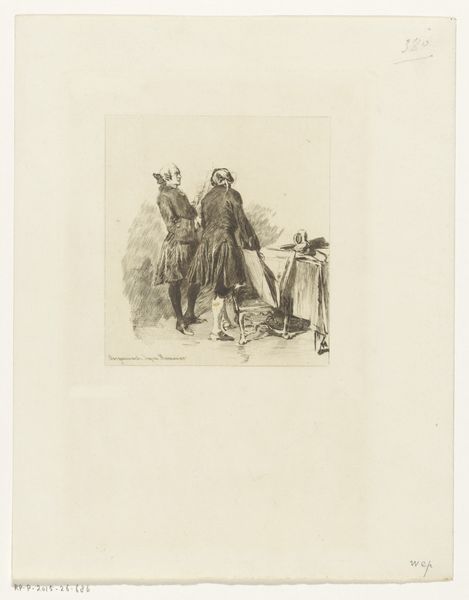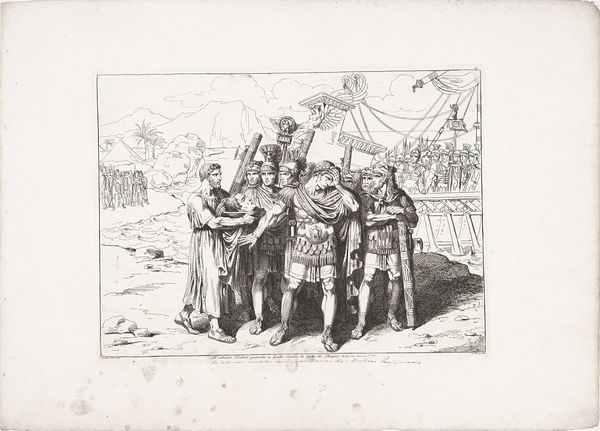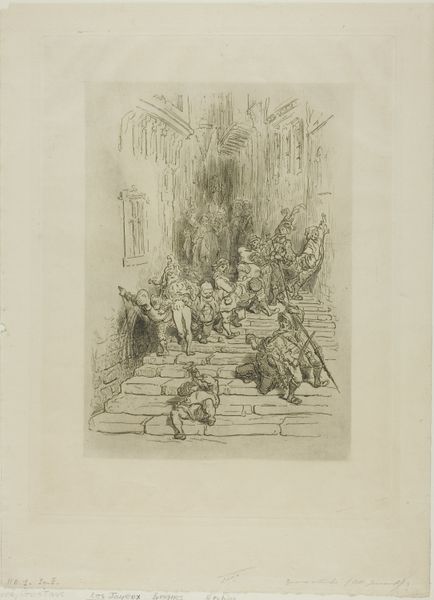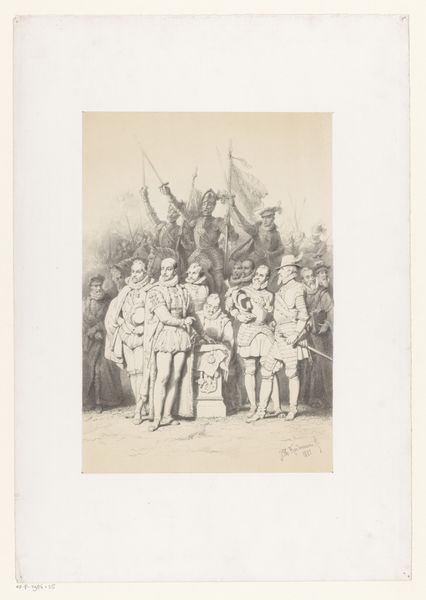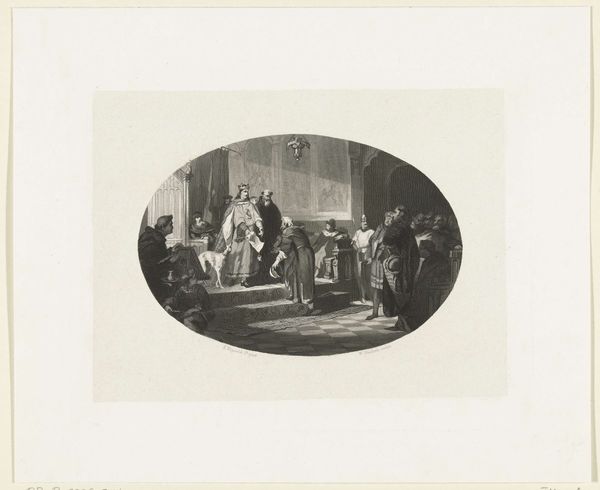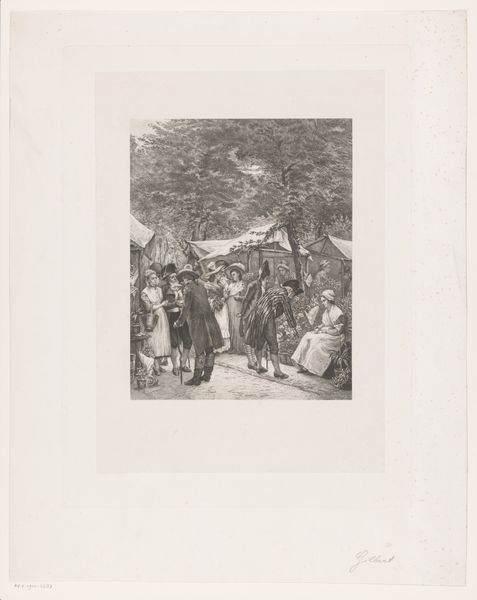
print, engraving
#
portrait
#
medieval
#
narrative-art
# print
#
old engraving style
#
figuration
#
line
#
history-painting
#
engraving
#
realism
Dimensions: height 187 mm, width 174 mm
Copyright: Rijks Museum: Open Domain
Editor: Here we have an anonymous 19th-century engraving, "Johan van Oldenbarnevelt op het schavot, 1619," housed here at the Rijksmuseum. It depicts a public execution. The linear style almost feels detached, even cold, despite the dramatic subject matter. How do you interpret this work, especially given its historical context? Curator: That detachment you sense is key. This image isn't just about Oldenbarnevelt's execution; it’s about power, and more importantly, about the visual construction of power. Consider the context: Oldenbarnevelt was a powerful statesman, but he fell out of favor and was condemned. This print, likely produced much later, participates in shaping the narrative around that event. Who commissioned it, and what message were they trying to convey? Editor: So, it's less about historical accuracy and more about political messaging? Curator: Precisely. Think about the composition: the architectural backdrop almost dwarfs the figures, subtly implying the weight of the state. The linear style, which you described as “cold”, creates a sense of distance, perhaps suggesting the inevitability of Oldenbarnevelt’s fate and erasing the brutal reality. How does that stylistic choice align with potential motivations for the print’s creation and distribution? Editor: I hadn’t considered how the artistic style could serve a specific political purpose. I was so focused on the literal depiction of the event. It's like the print isn’t just showing us history but is also trying to control how we understand it. Curator: Exactly. By analyzing these choices – the composition, the style, the probable patronage – we can unpack the complex relationship between art, power, and collective memory. This seemingly simple print becomes a lens through which we examine broader societal and political narratives. Editor: That’s fascinating. I'll definitely look at historical artworks with a more critical eye from now on, thinking about the power dynamics at play. Curator: And consider the narratives that are being excluded or suppressed. That’s where things get really interesting.
Comments
No comments
Be the first to comment and join the conversation on the ultimate creative platform.
